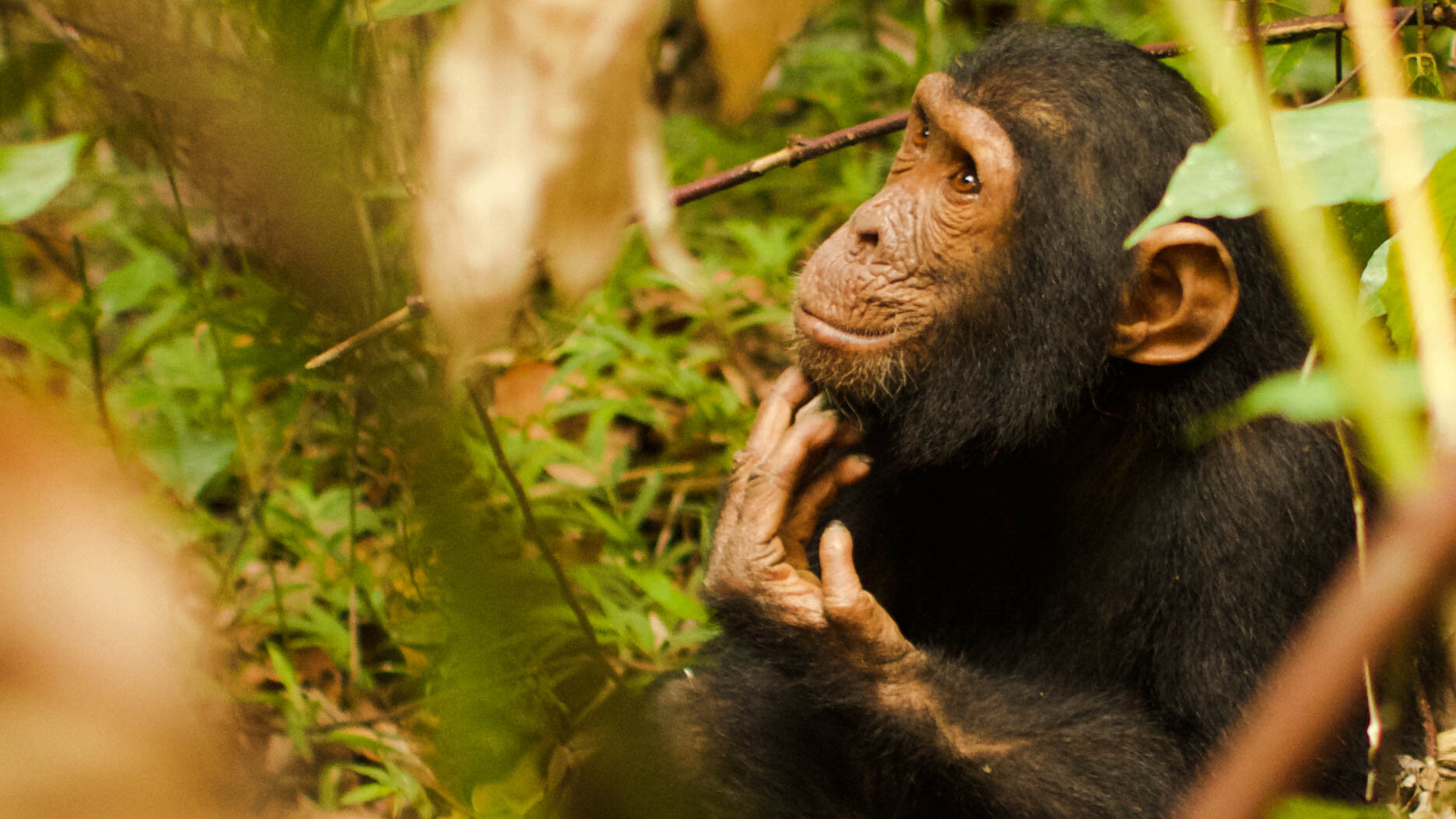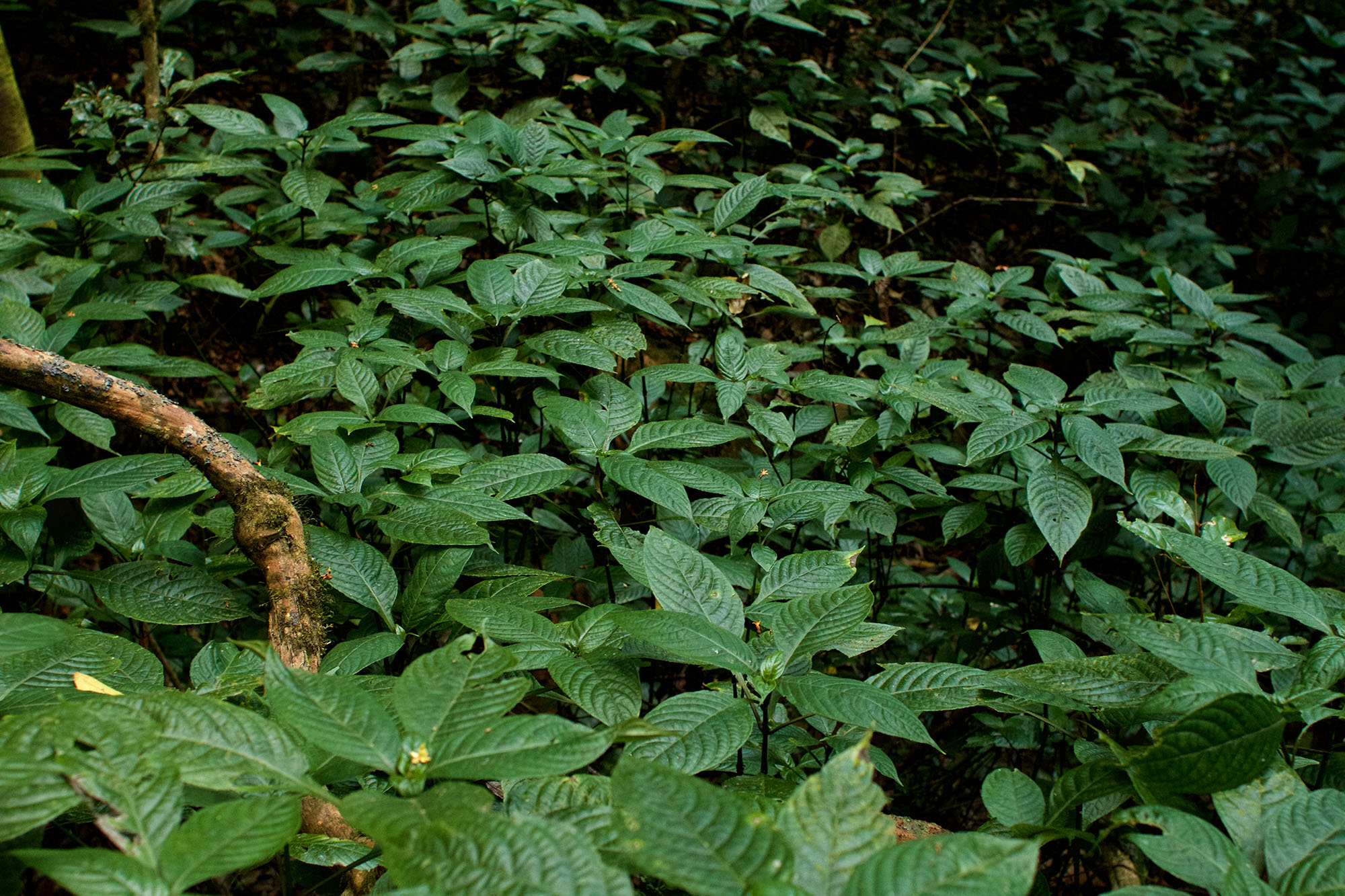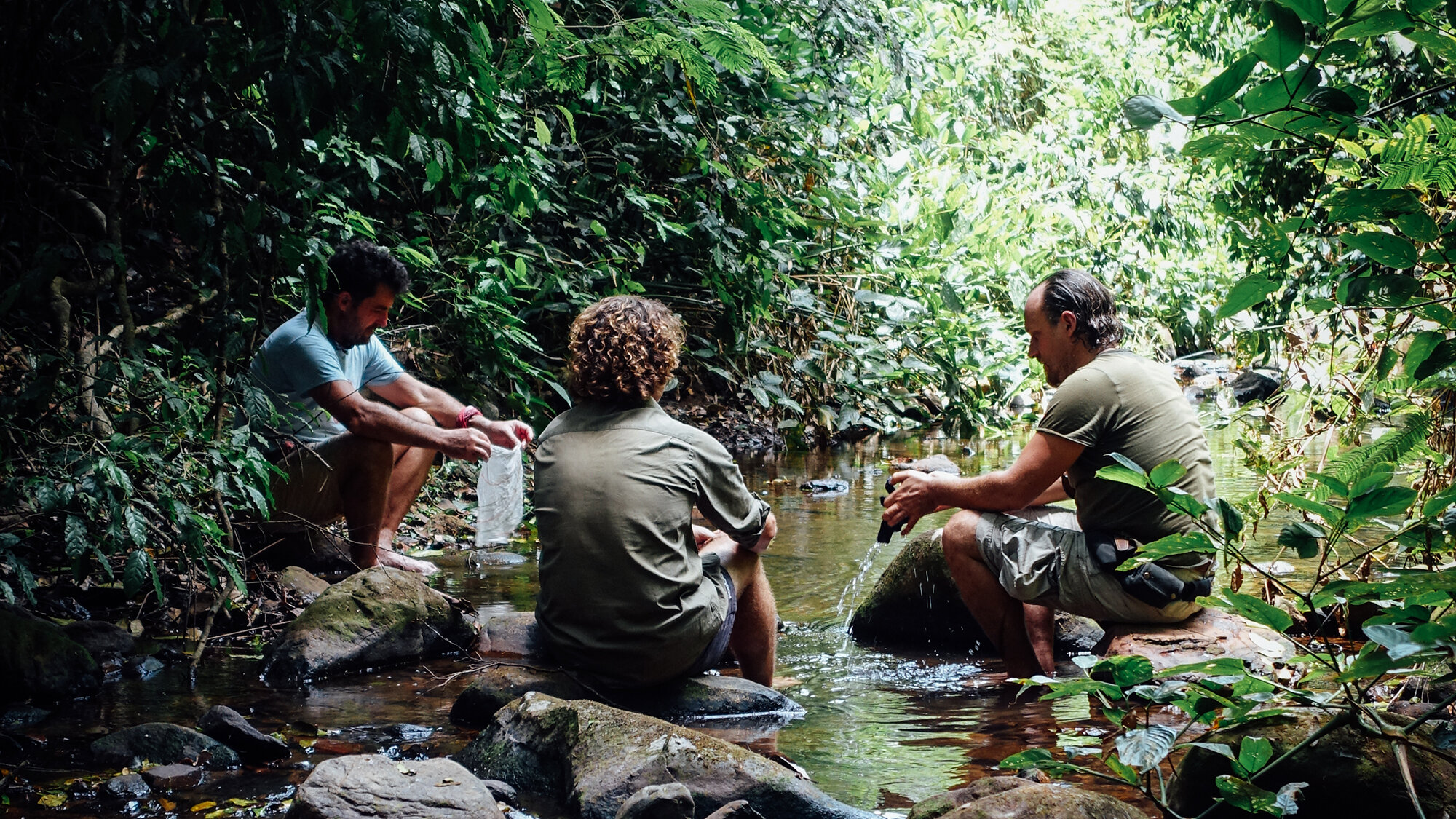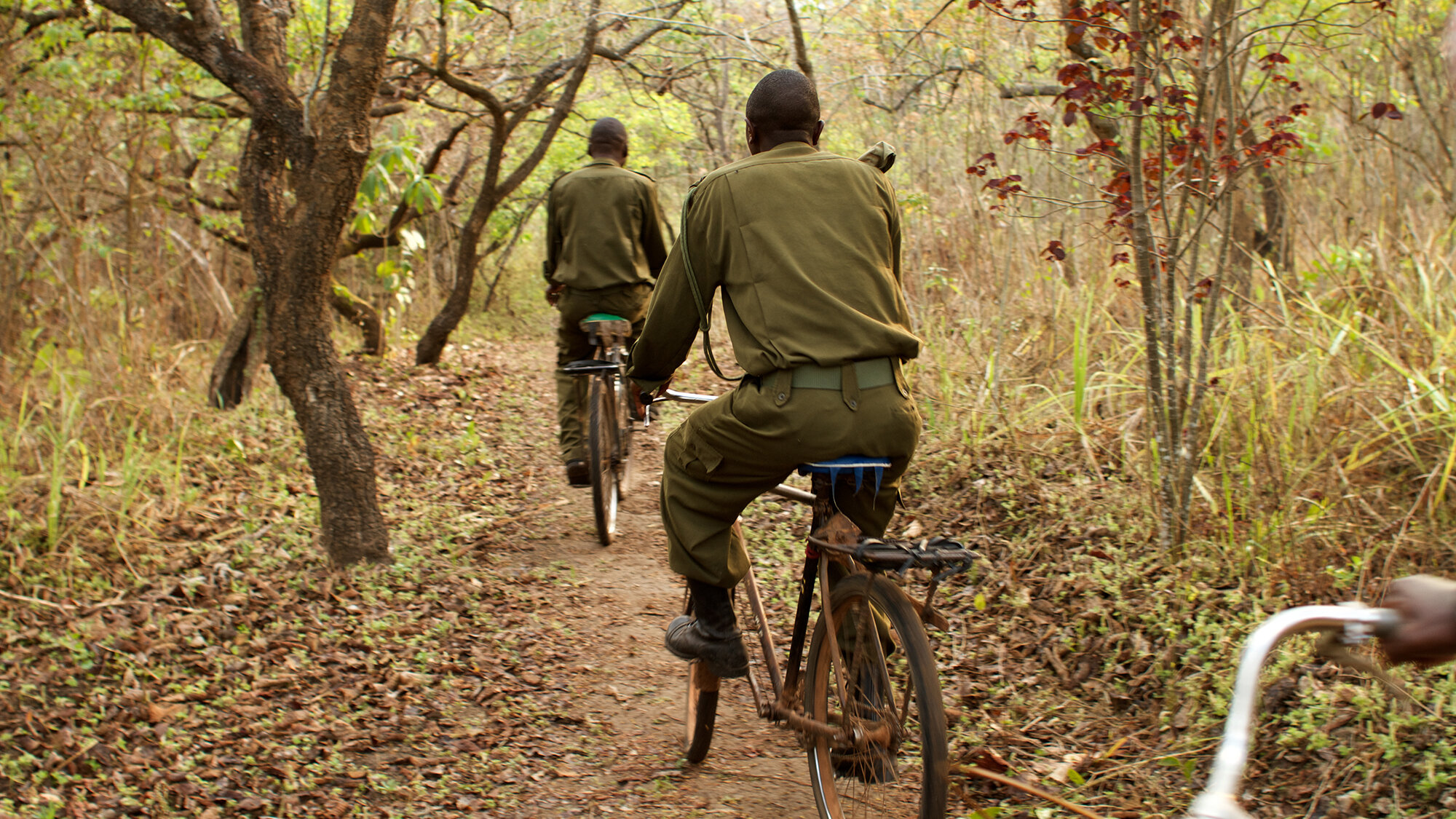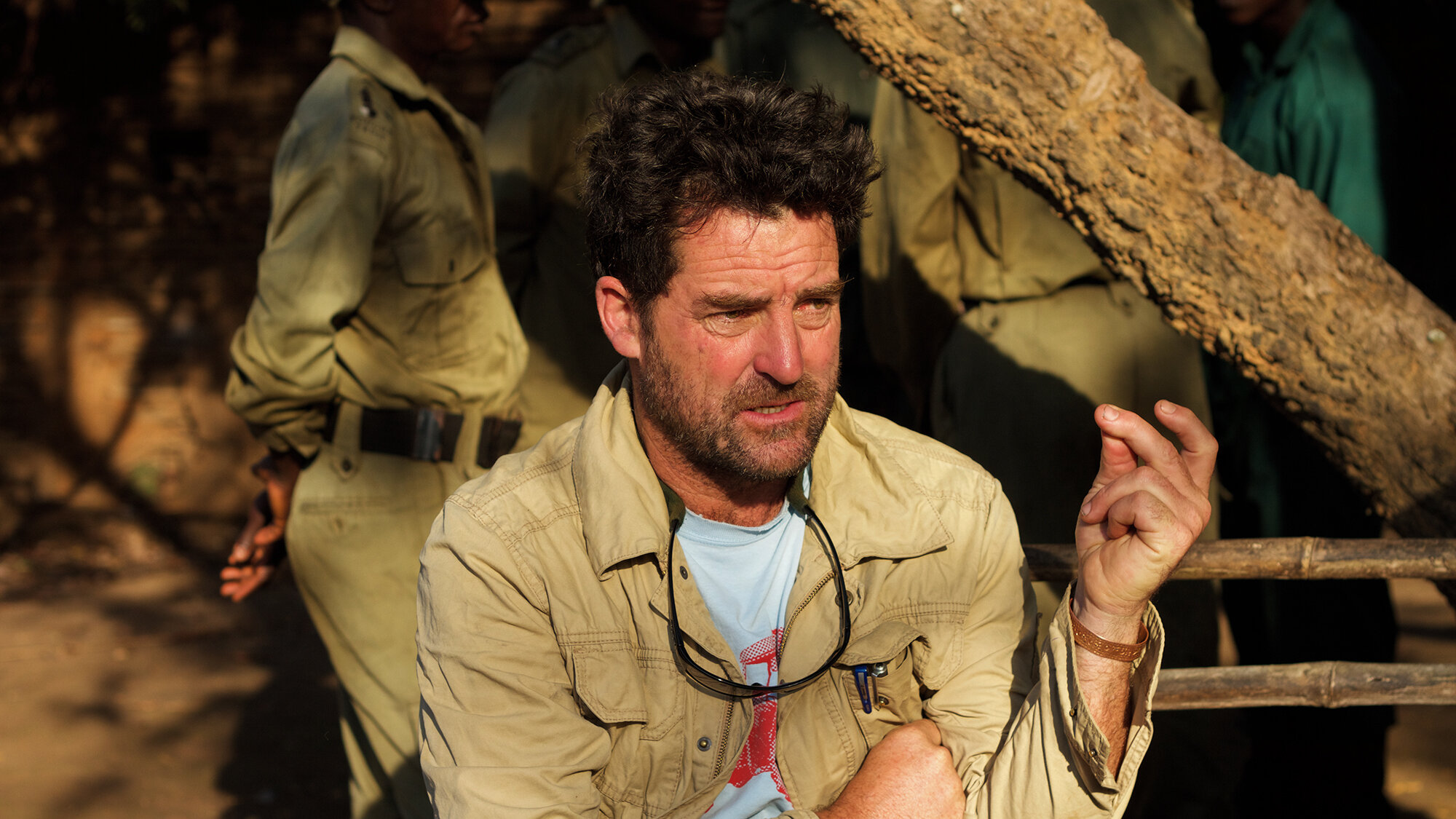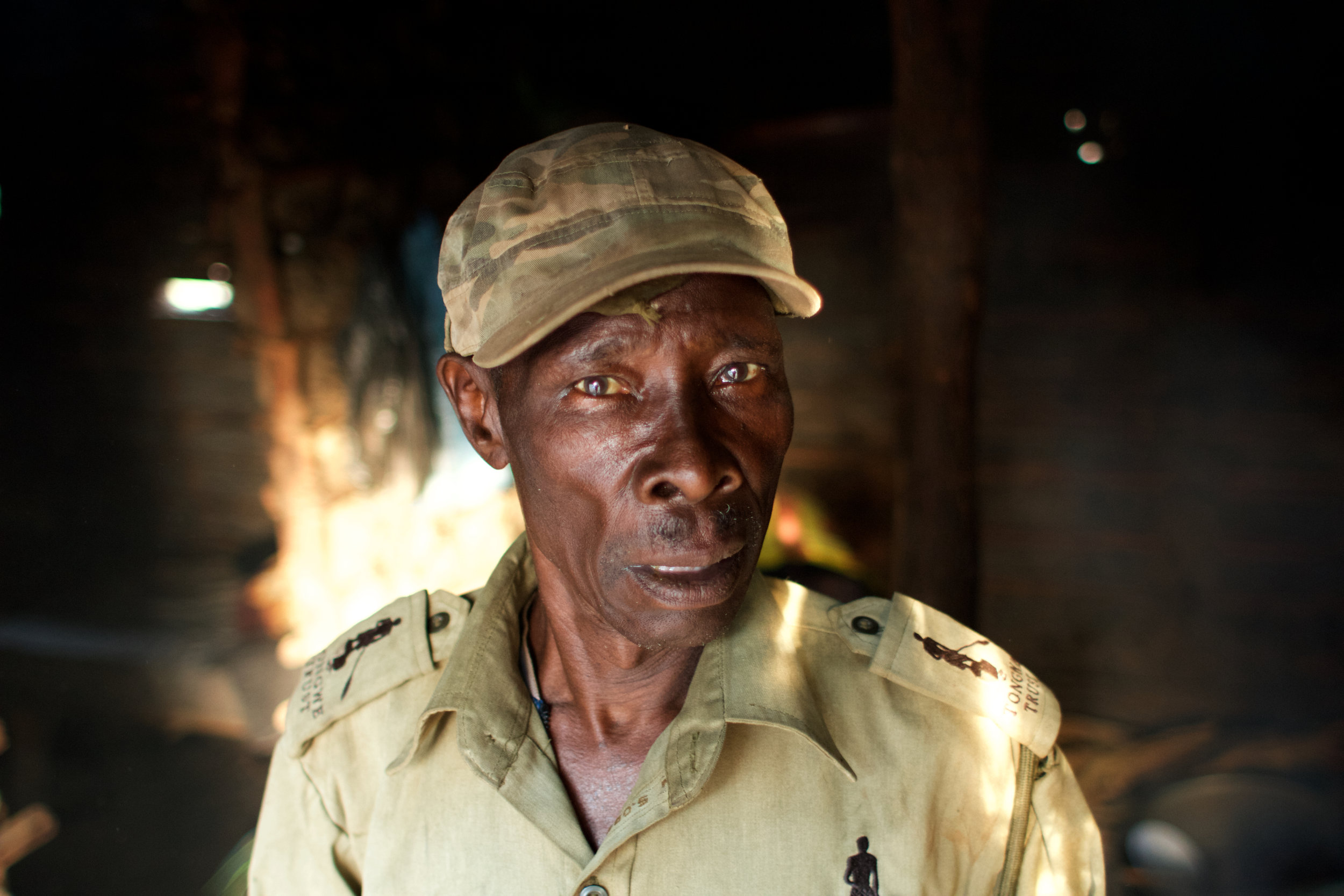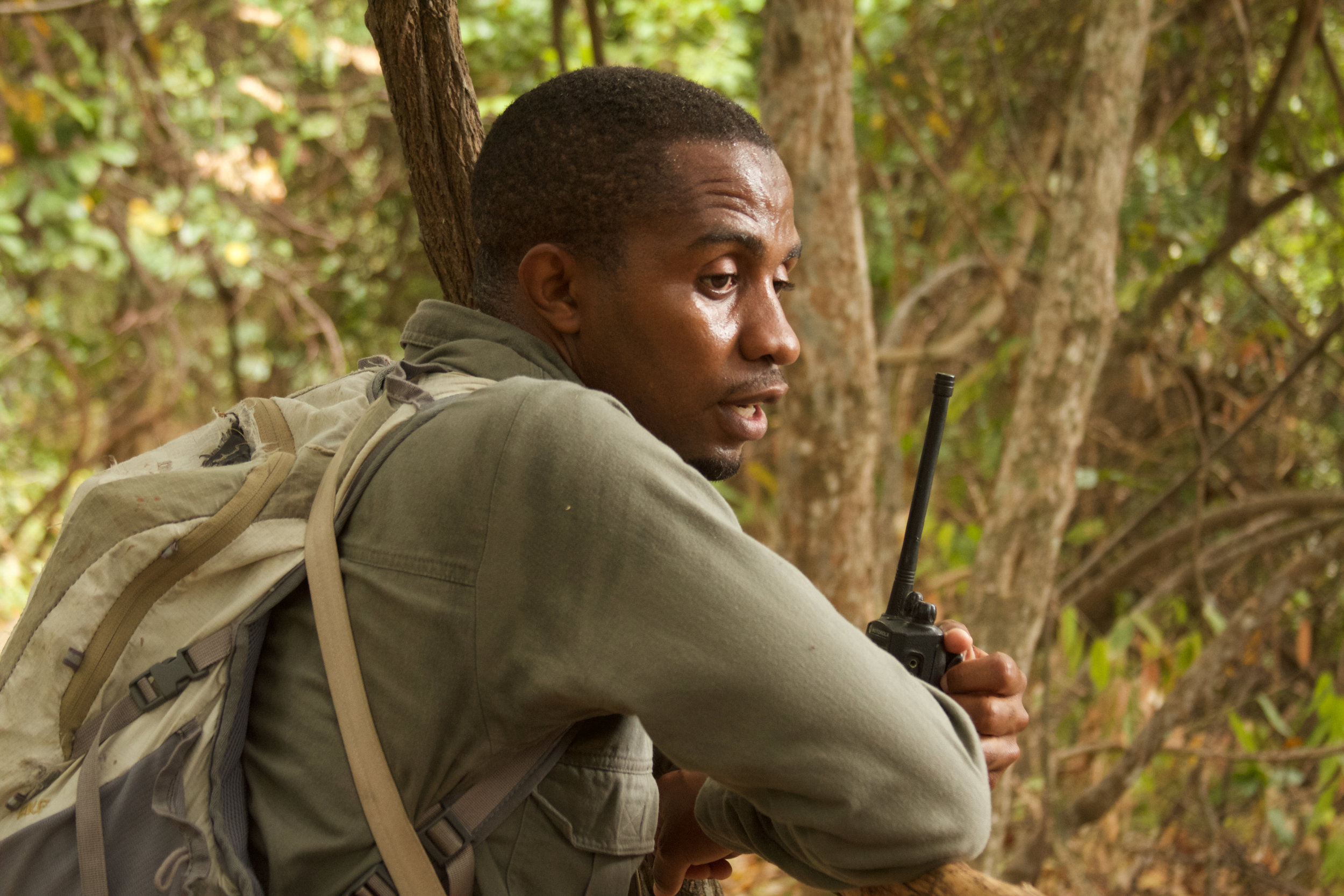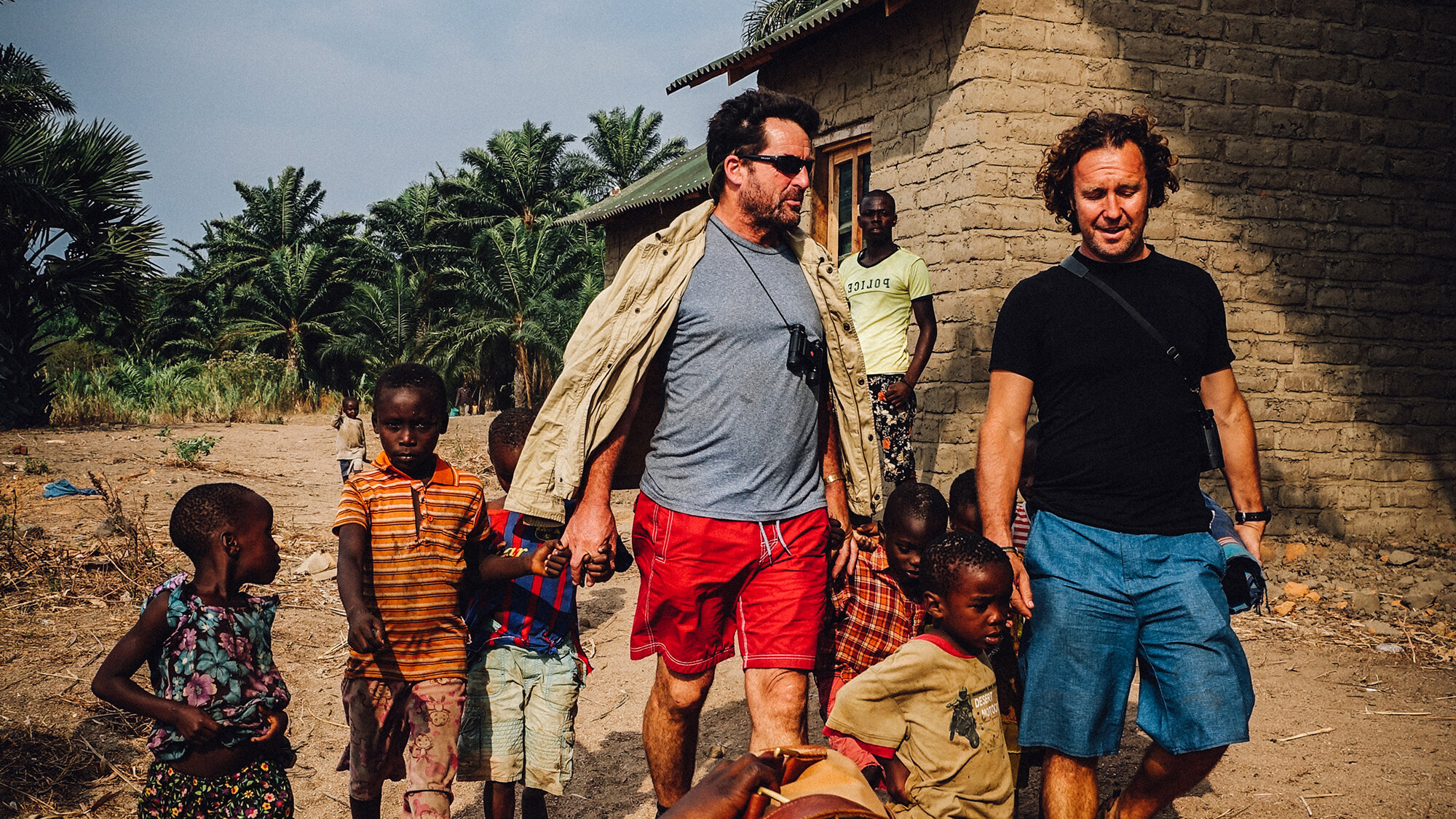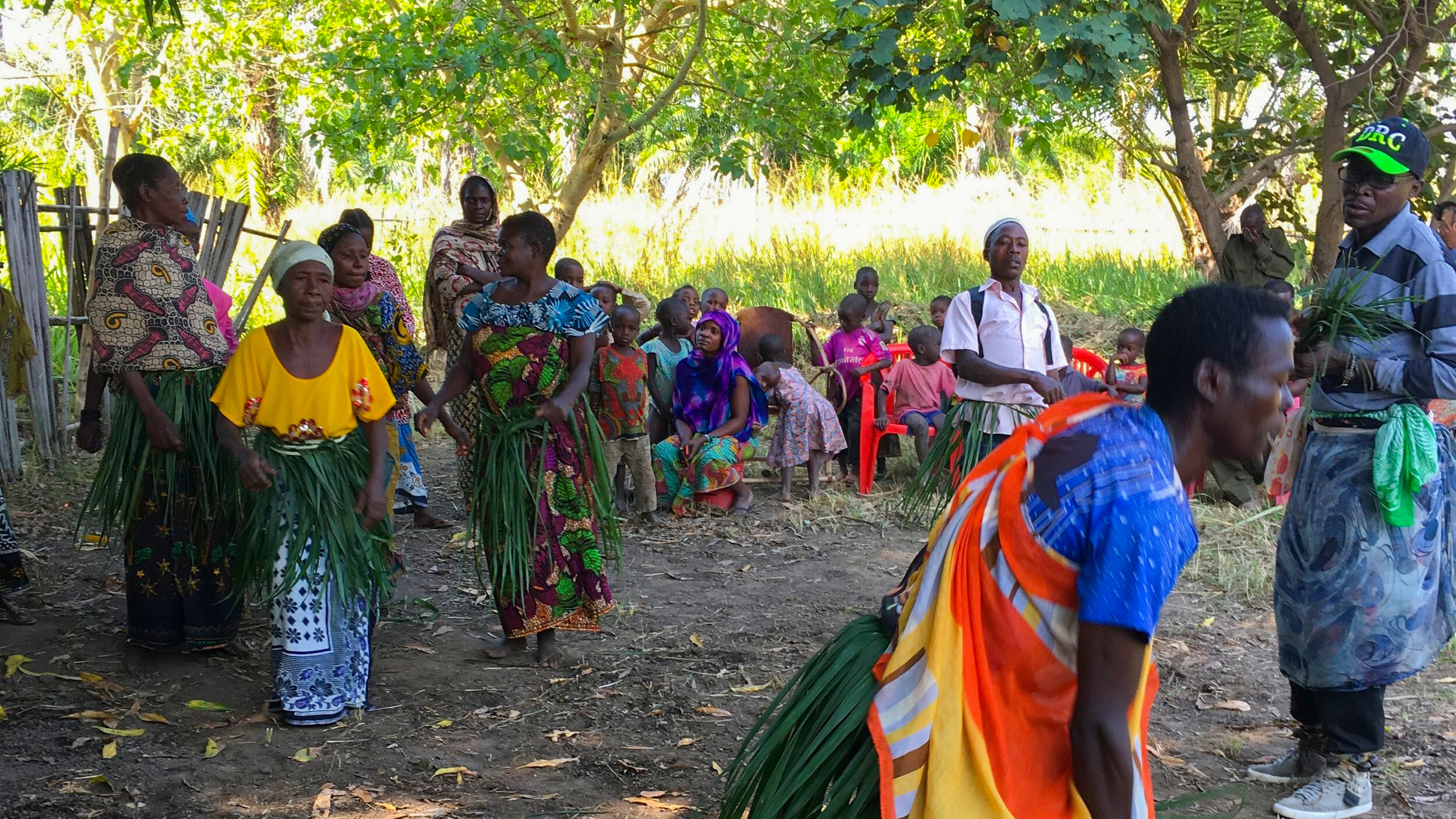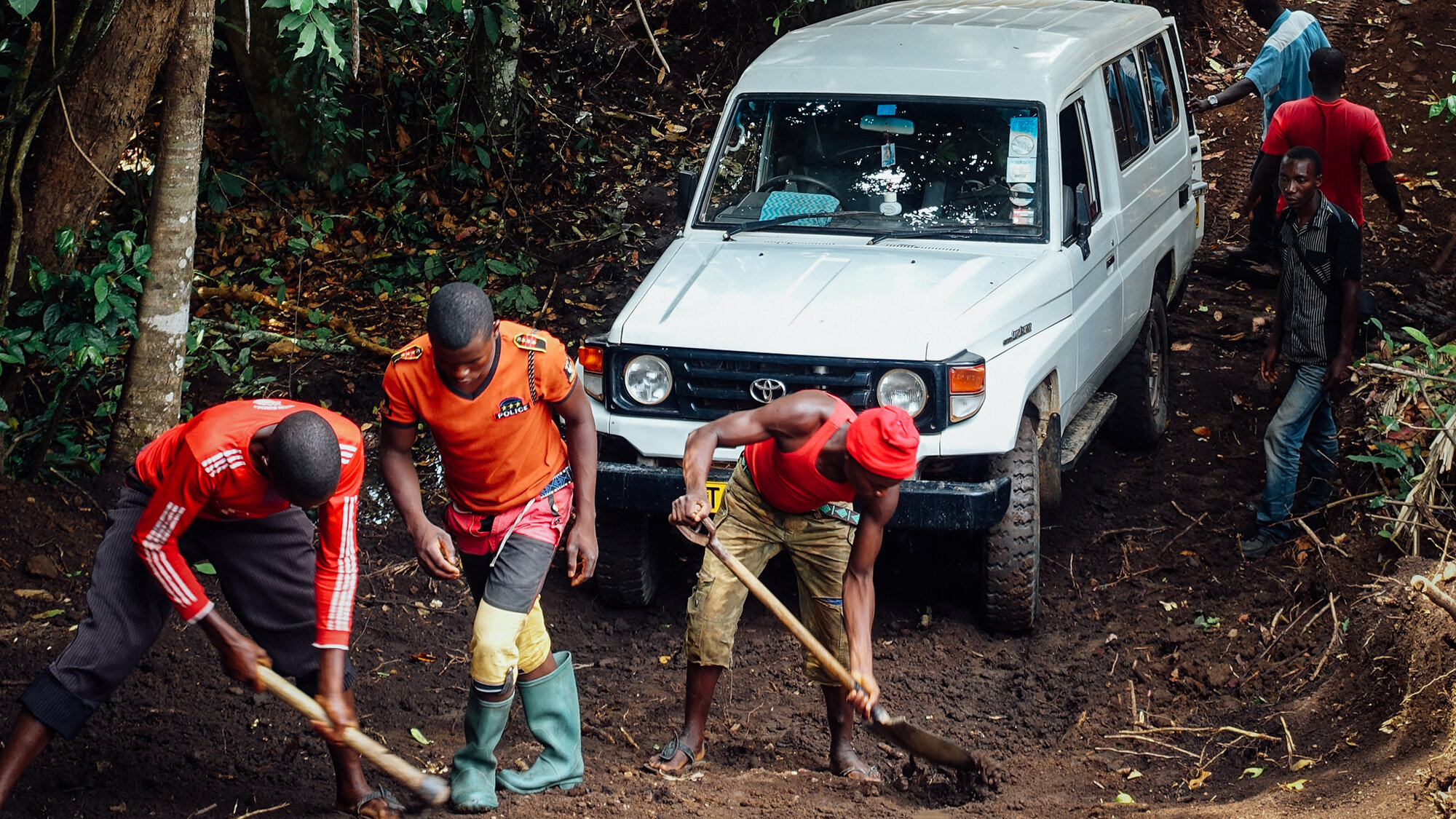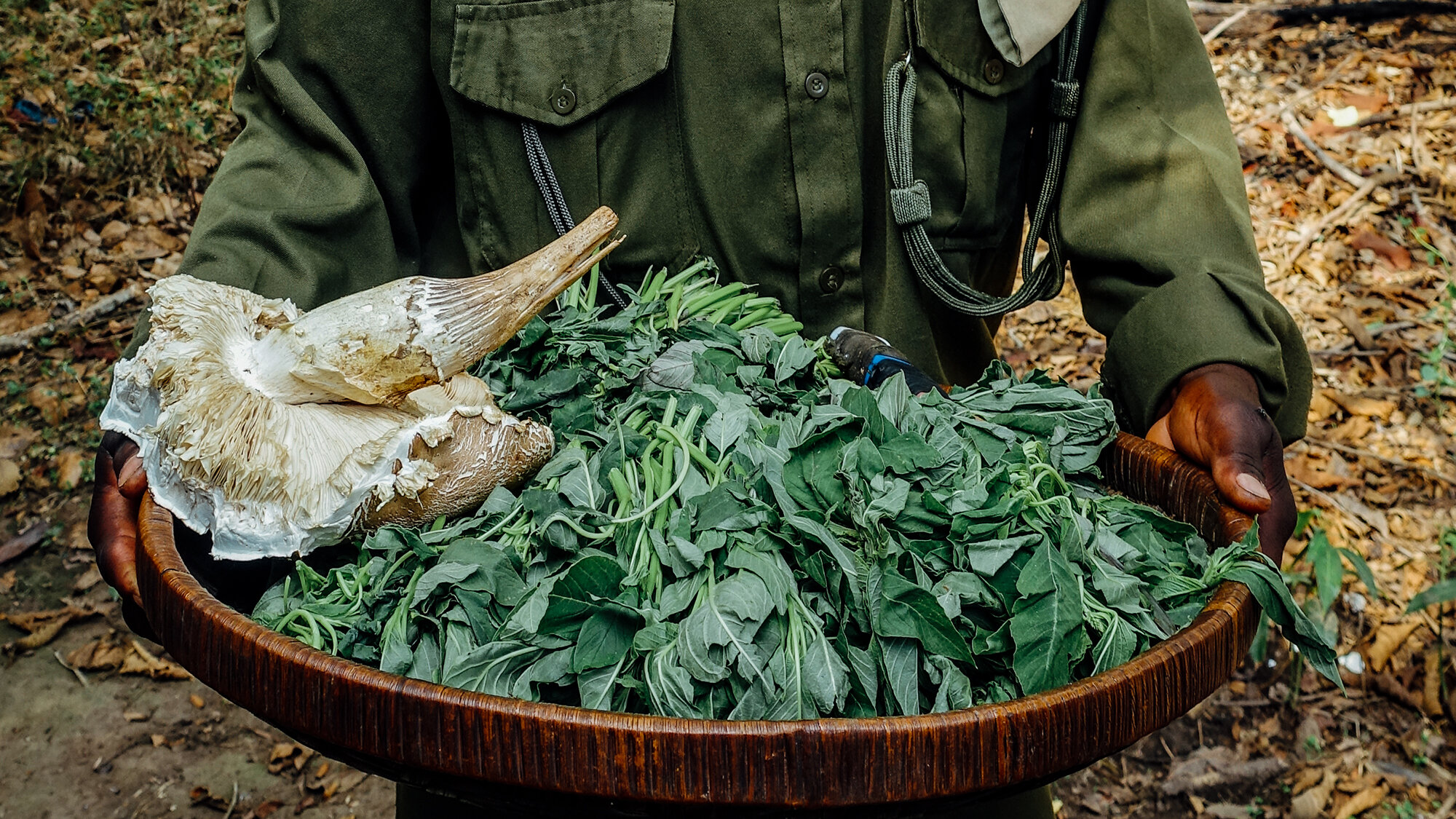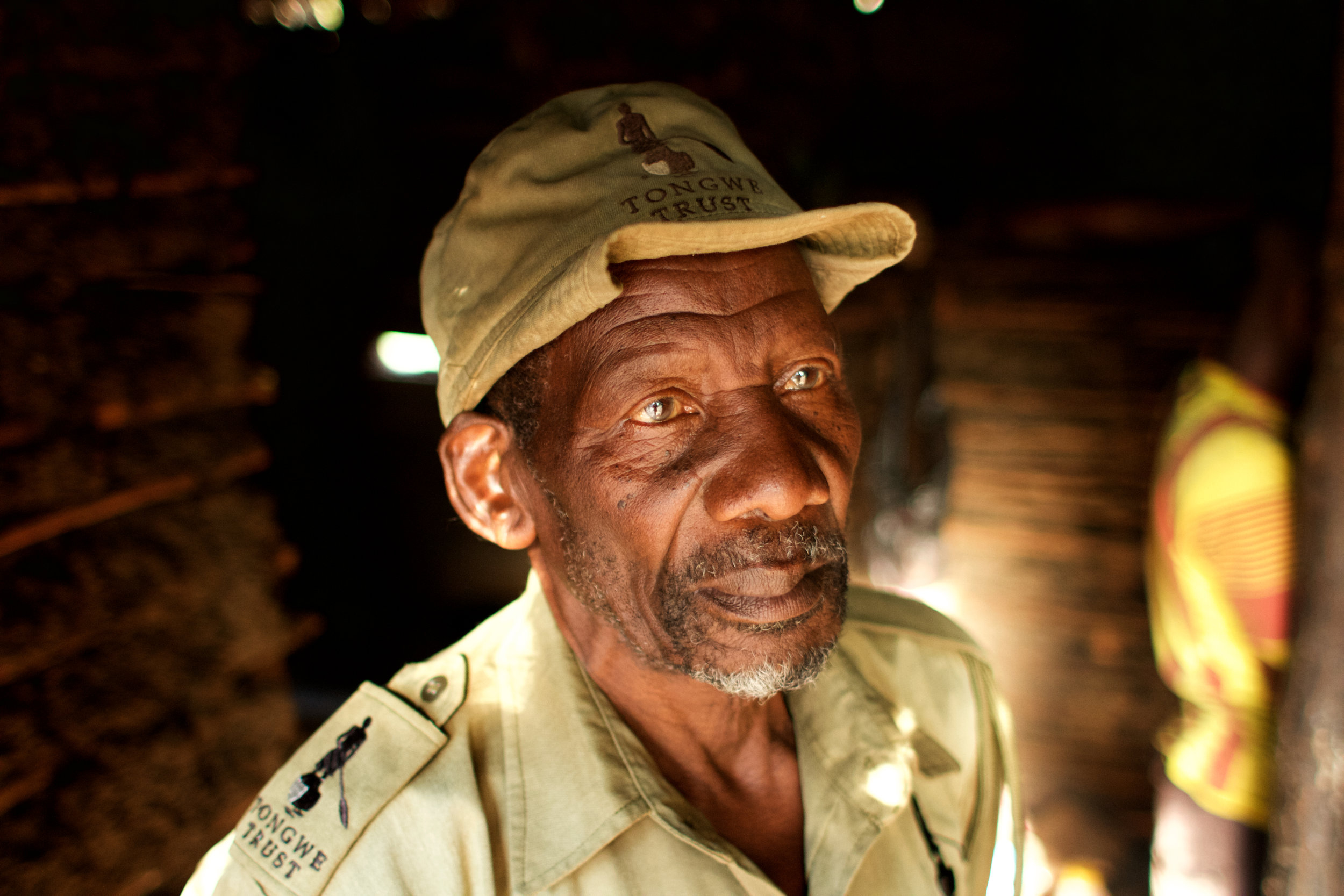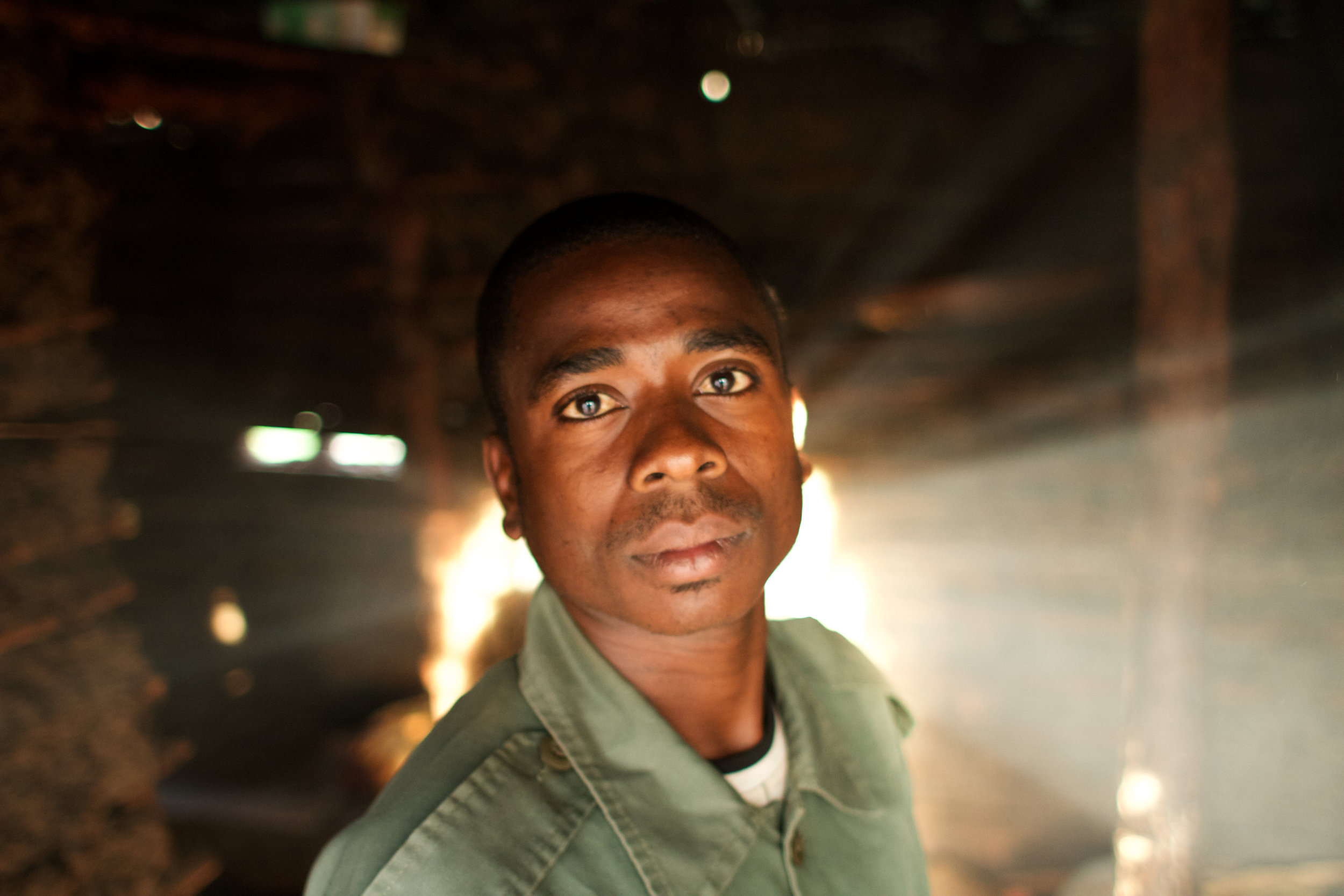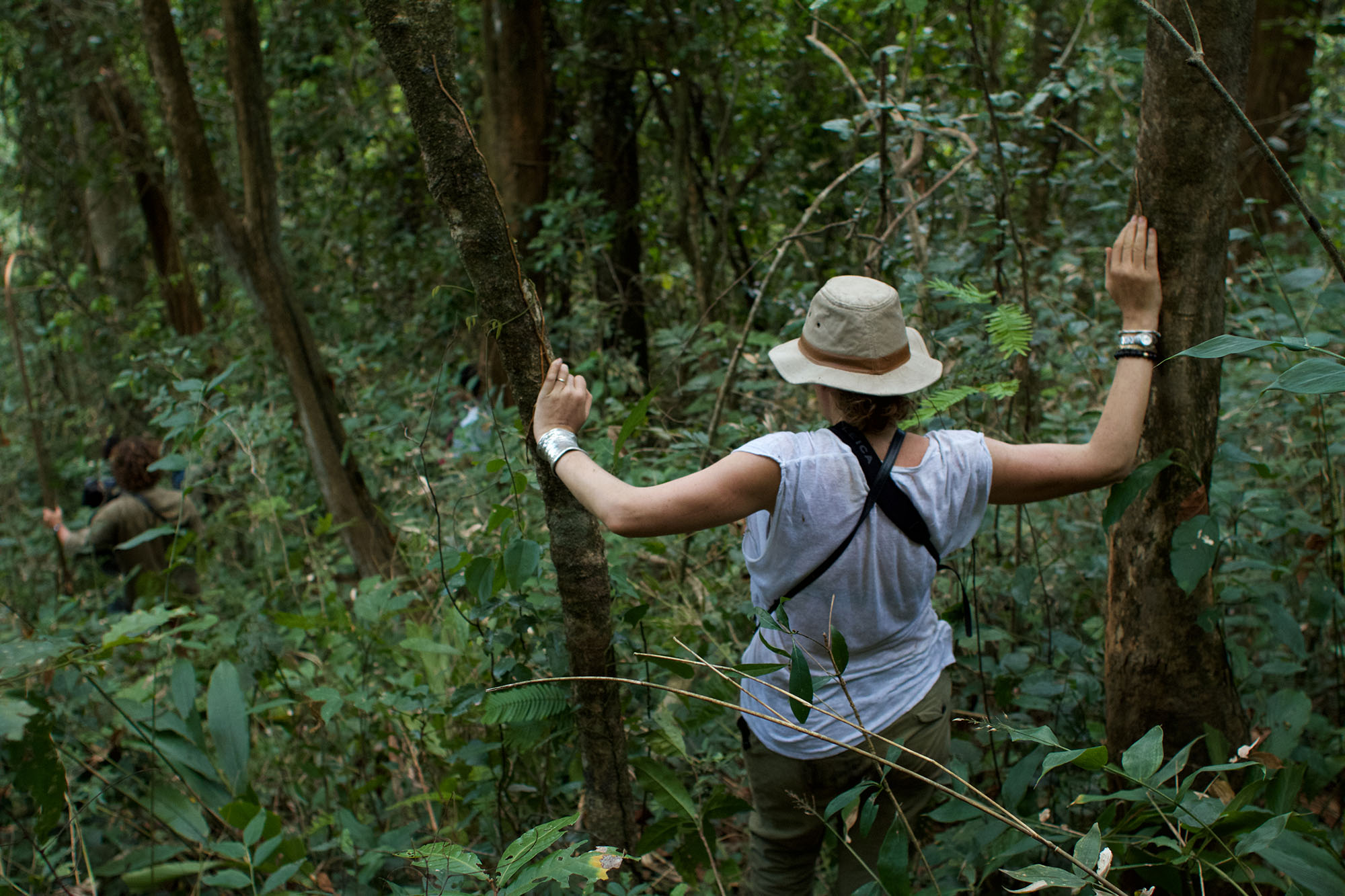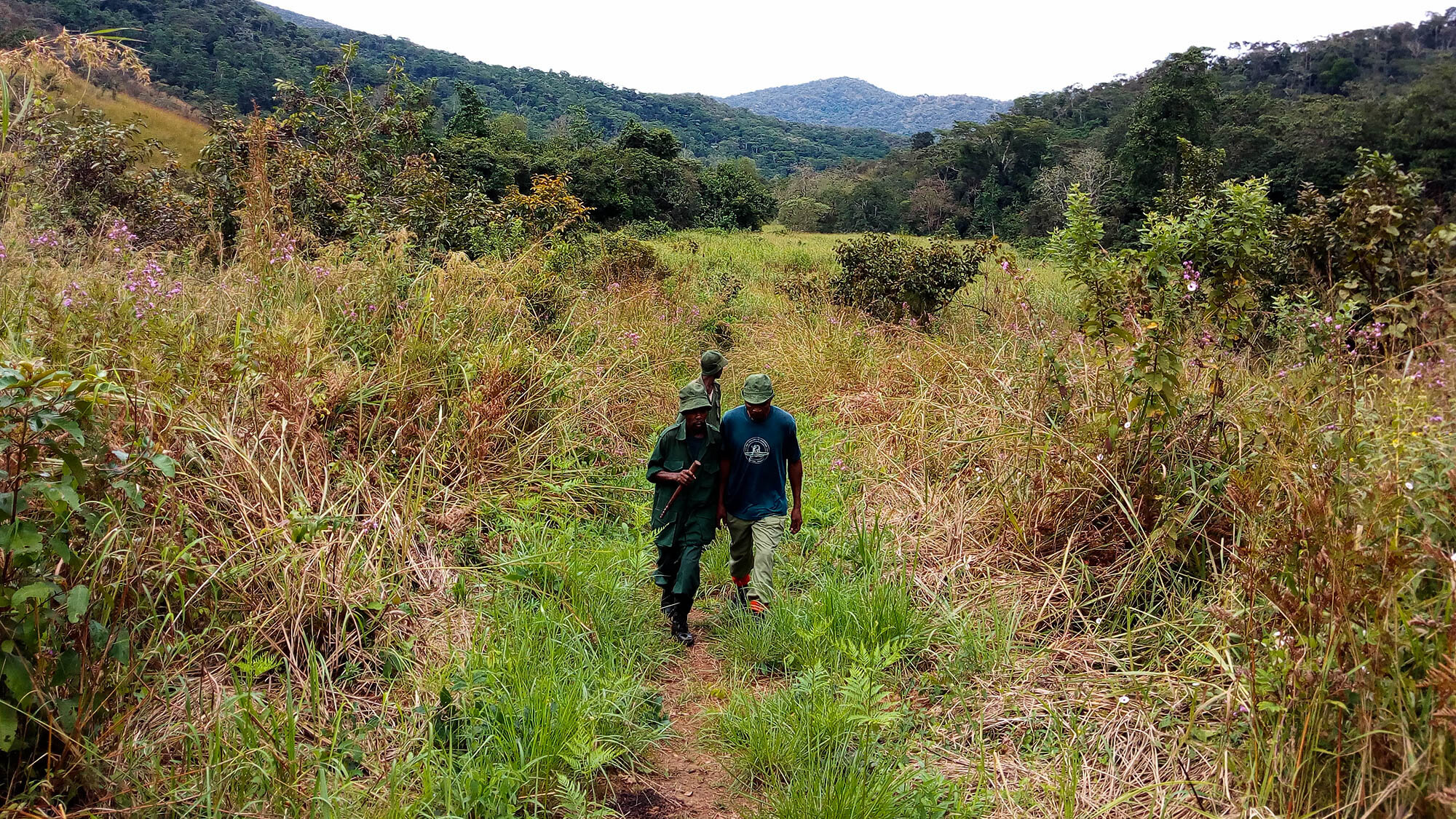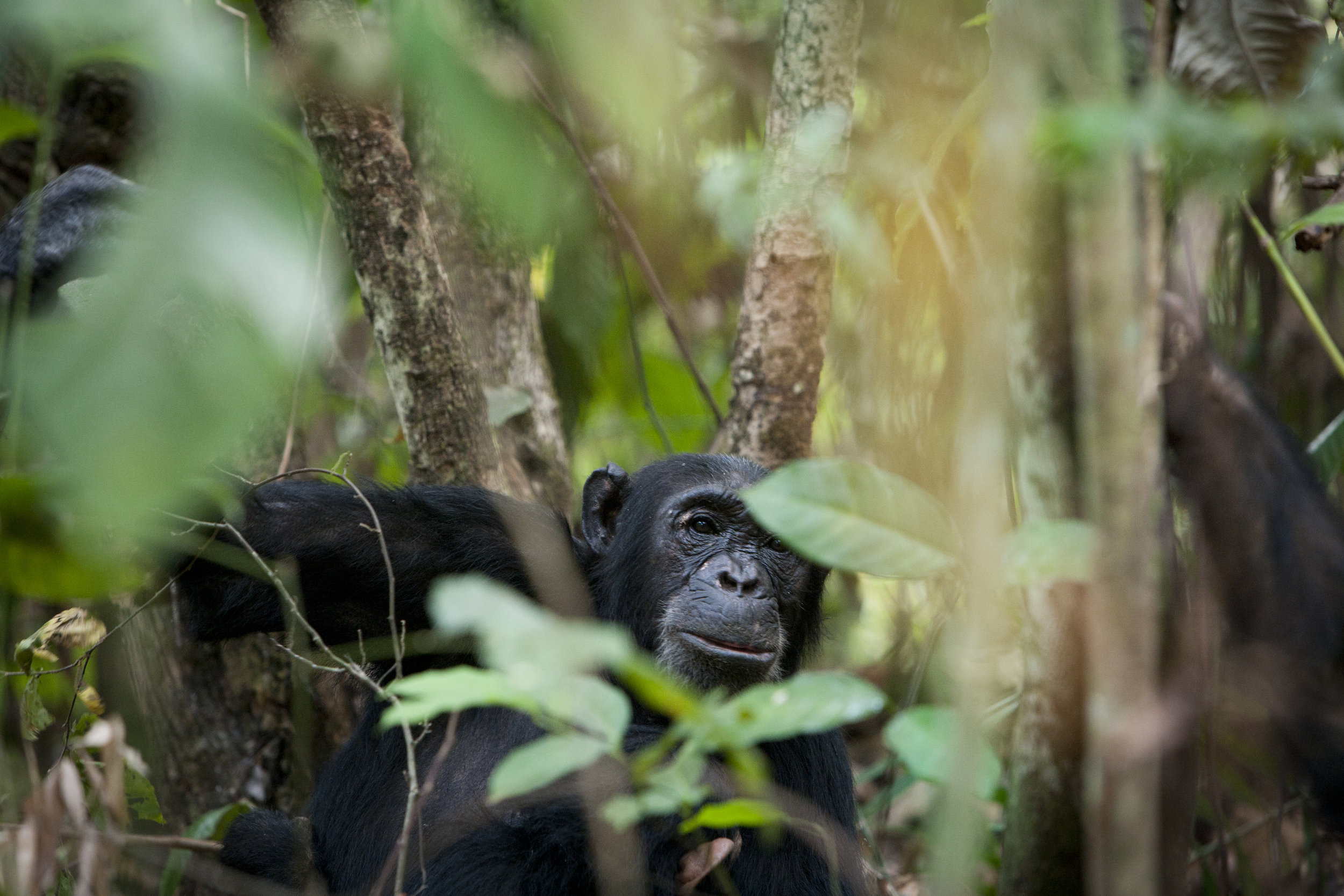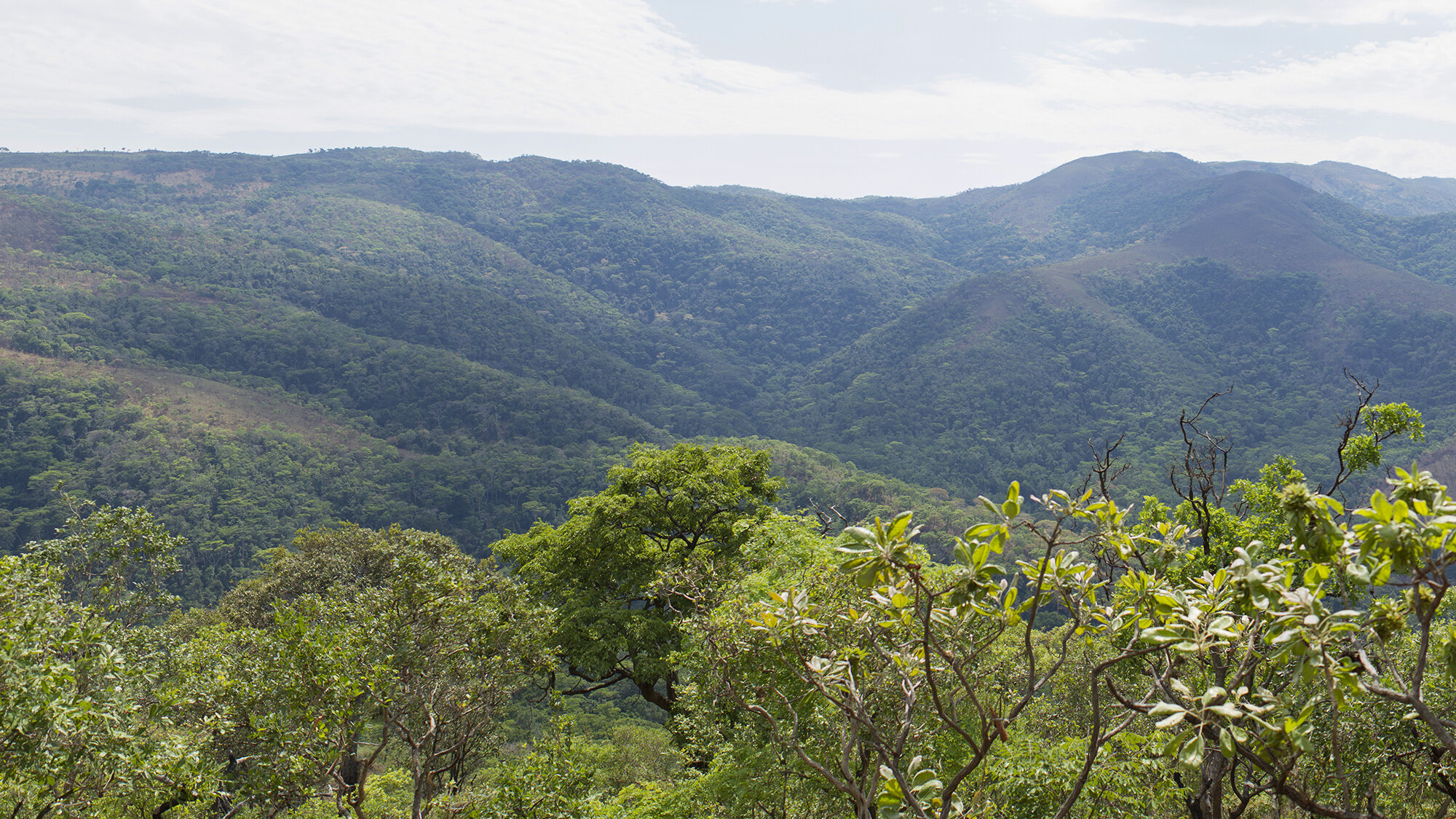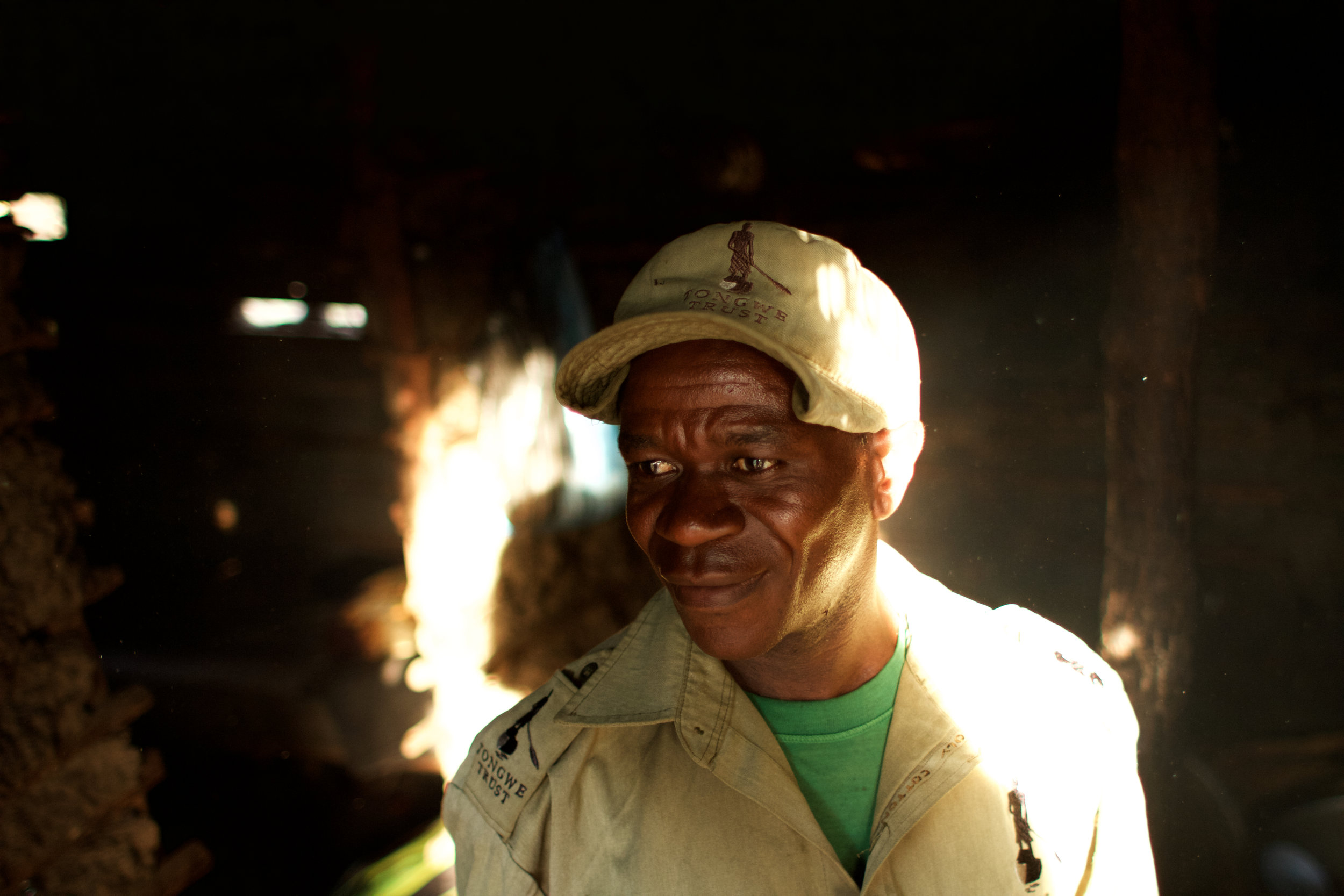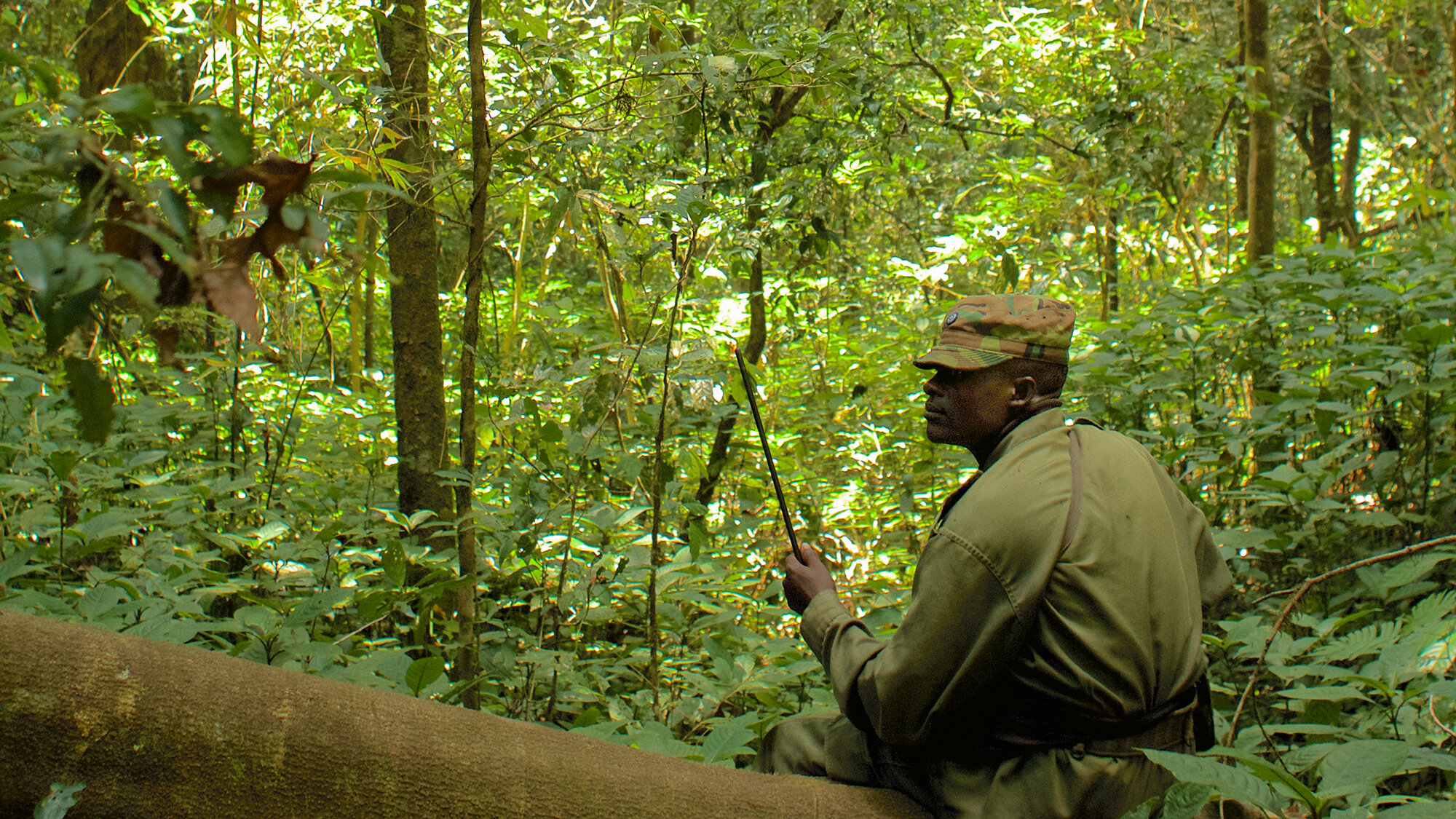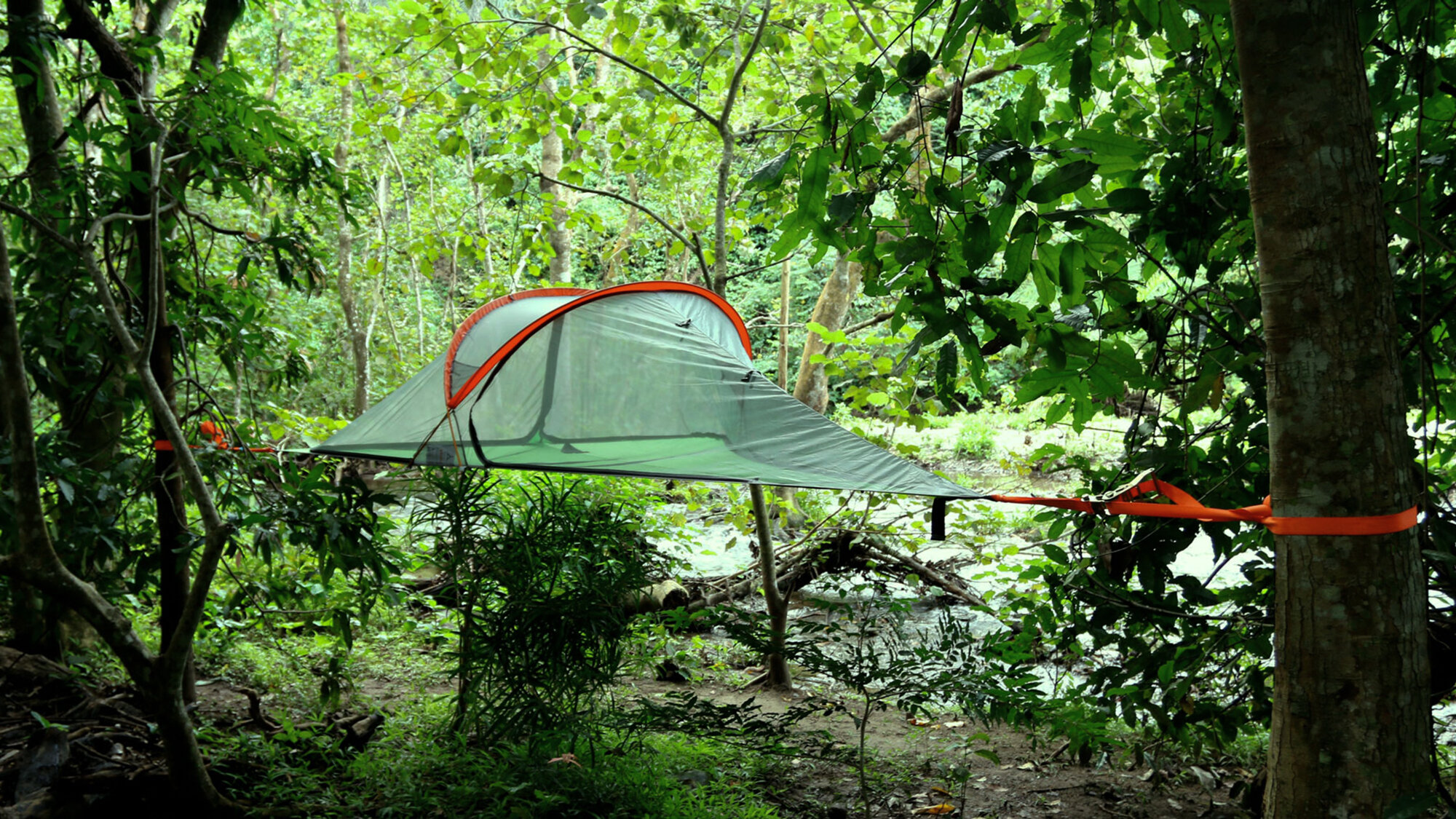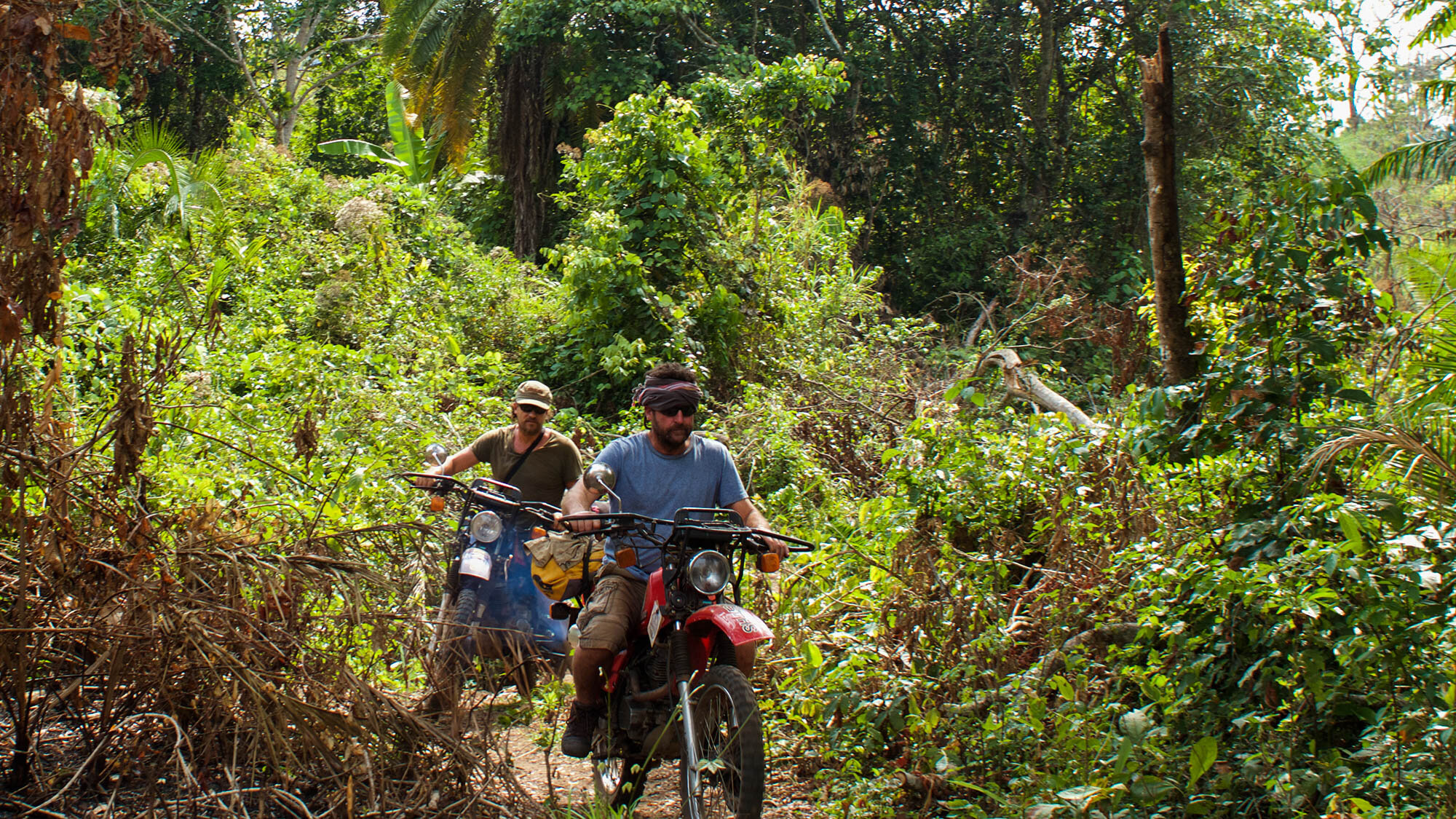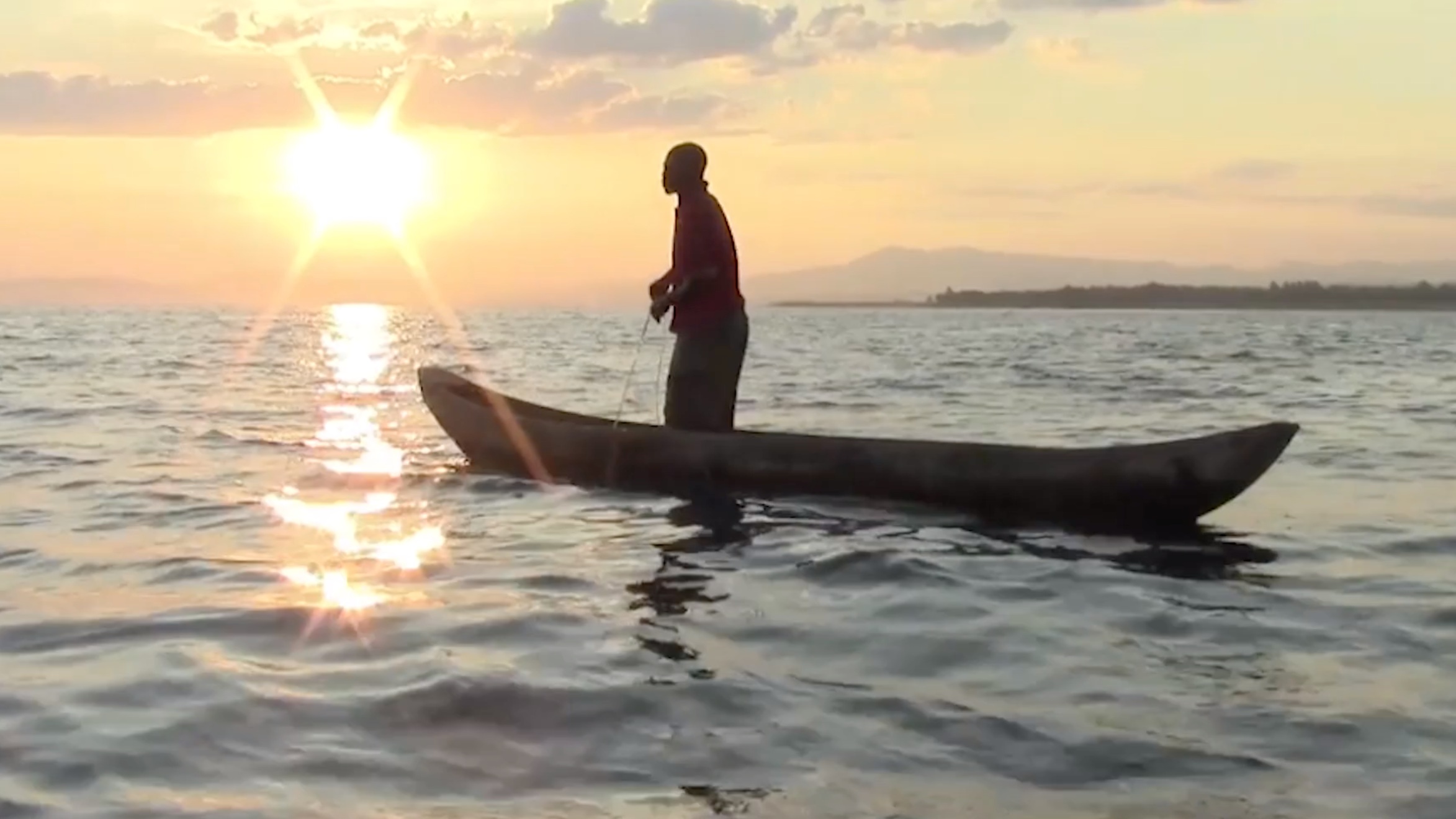
Our Story
Based in the Greater Mahale Ecosystem, in Tanzania, the Tongwe Trust was set up in 2002 with the expressed aim of securing Ntakata Forest as the Tongwe people’s new cultural heartland. Largely founded, staffed, and organised by members of our different villages, we are a community-led organisation.
The loss of Mahale
With the introduction of President Julius Nyerere's revolutionary system of Ujamaa, we were required to leave our original cultural heartland in the Mahale Mountains in 1973. Resettled in multi-ethnic villages, the system gave us education and centralised health care. However, it did not suit our more traditional ways of life, and for the next decade we actively lobbied for a return. Unfortunately, all hope of repatriation disappeared when Mahale was made a national park in 1985.
The fight for Ntakata
With the loss of Mahale, we turned our attention to Ntakata Forest, where we have lived for centuries. Just 25 kilometres outside the park, Ntakata lies at the centre of Tongweland, and has over the years suffered the effects of human population growth, deforestation, and attempts to legally categorise it as ‘open’ land. Given a mandate by villages to protect the forest, we worked together with Fauna & Flora International to secure Ntakata as a Village Land Forest Reserve.
Protecting the heartland
Our efforts were finally rewarded when Ntakata Forest was formally recognised as the Tongwe’s new cultural heartland in 2015. However, while our original aim has been achieved, population growth, inter-ethnic conflict, the bush meat trade, and land conversion all remain a threat: the Trust is dedicated to protecting our new heartland, its efforts funded through donations, grants, and a variety of activities, including developing Ntakata as a ‘narrow gauge’ eco-tourist destination.
Our work
Working closely with all members of our community, we help protect Ntakata Forest in several interrelated ways, including: a comprehensive ranger programme, community tourism, grassroots conservation awareness programmes, fundraising, supporting scientific studies, acting as intermediary in natural resource disputes, archiving forest-based folklore, and partnering up with fellow conservation organisations.
Securing Ntakata
The Tongwe Trust currently employs 20 full time rangers. Working out of several village-based ranger posts, we practise a form of narrow-gauge conservation, preferring to patrol without guns, and on foot or by bicycle or motorbike. It is a style of patrol that leaves the forest relatively inaccessible to illegal cattle grazing. Our rangers hail from local forest villages, and are supported in their efforts by the wider community. While not in use for commercial purposes, we have an airstrip that serves operations and training needs.
The Boyer Project
In addition to Ntakata, we have secured a small piece of land on the lake’s shores. A no-fishing zone, it feeds into the Mahale-wide Boyer Project, a part of The Nature Conservancy’s Tuungane Project, which works to create healthier families, fisheries, and forests in the Greater Mahale Ecosystem. The Boyer Project is designed to delineate fishing grounds, mediate conflicts over fisheries, and to protect the lake against over-fishing. We will eventually build an eco-camp here, which will link perfectly with our community tourism operation in Ntakata.
Community tourism
As catalyst and support for our conservation efforts, community-based tourism promises to be a source of funds and alternative livelihoods. The forest is home to a rare crossover of non-habituated chimpanzee and forest elephant, and to the traditions and customs of our people, and as such is a fantastic destination for the conscientious traveller. For deeper access, we have established Chimp Nest Camp, a mobile eco-flycamp, allowing us to move at will and host guests throughout the forest. Practising that self-same narrow-gauge wildlife and cultural eco-tourism, our knowledge, skills, and intricate relationship with the forest makes for the most extraordinary of adventures - and serves an extremely important purpose.
Diversifying livelihoods
As well as through the ranger and community tourism operations, the Tongwe Trust continues to support sustainable development among our community in several ways, including beekeeping, micro-finance initiatives, and a cultural centre.
Facilitating the ways of the old
Ntakata is a living cultural heartland. As custodians of that heartland, the survival and future flourishing of our traditions and customs are crucial to ensuring Ntakata remains protected. As such, the Tongwe Trust actively promotes Tongwe forest traditions and customs, through research, its cultural centre, helping monetise traditional practices, and archiving what has hitherto been a largely oral tradition.
In the scientific field
The Tongwe Trust owes a great deal to the support of Fauna & Flora International (FFI), whose original research-based evidence - gathered with the help of the Trust and the wider community - helped fund-raise and make the case for Ntakata’s protection. We continue to work closely with FFI, as well as providing ongoing support for a number of different organisations’ Ntakata-based fieldwork.
Raising funds
It takes a minimum of US$35,000 yearly to maintain the Tongwe Trust’s operations, which at 33 cents per acre represents extraordinary value in habitat conservation. A local operation locally run, over 90% of monies raised by the Tongwe Trust stays at home. As well as raising funds through our own activities, we have relied on one-off grants and donations from the likes of the Critical Ecosystem Partnership Fund and the charity Wild Philanthropy. It is our aim that we will eventually be able to stand on our own two feet. For now, however, we’re working to secure a source of dependable funding, one that will support Ntakata and the Tongwe in the near and medium term, and that will help drive wider sustainable development.
Relief from Covid
Thanks to recent and much needed grants of $5,000 and $25,000 from Wild Philanthropy’s African Tourism Crisis Fund and from Tusk Trust (which released funds from the Scheinberg Relief Fund), we have managed to protect ranger salaries, and so ensured that their families, the wider community, and the forest continue to benefit from the ranger programme during the present crisis. As per the above, we continue to seek a source of ongoing funding.
Please note that we welcome donations via Wild Philanthropy, which guarantees that 100% of donor money reaches the Trust.
The Tongwe
The Tongwe are thought to have arrived in what is now western Tanzania in 500 BC. Pushed out of the Congo by the Bantu expansion, we settled in the Mahale Mountains, which served as our cultural heartland until 1973, when Tanzania’s land-reform policies resettled us into the Ujamaa village system.
Following Ujamaa
Tongweland occupies 500 square kilometres along the eastern shore of Lake Tanganyika. Traditionally, the Tongwe were forest dwelling, lived in clans of between five and 30 people, and harvested the forest sustainably. Today, the majority of us live in multi-ethnic villages and towns, and are usually in the minority in larger habitations. Away from more populous areas, our habitats are smaller, more traditional, and further apart from each other. As well as the forest, Lake Tanganyika has always served as a significant resource, fish being a traditional and major source of protein, and the Tongwe are most proficient canoe makers. Until very recently, apart from foot, boat was the only way to travel.
The Bende
The neighbouring Bende of Bendeland, in Mpanda District, are closely related to the Tongwe, share the same traditional political structures and rituals, and speak almost the same language. Described by some Tongwe as ‘our little brother’, the Bende are an integral part of Ntakata Forest and the new cultural heartland. According to turn-of-the-century censuses, the ethnic Tongwe and Bende have a combined population of at least 55,000.
The old ways live on
Despite the move from Mahale and historic conversions to Islam and Christianity, many of our traditions and customs have survived, especially among those of us who have chosen to settle away from large villages and townships. We continue to utilise plants for medicine. Our ancestor system of beliefs flourish alongside newer religions. We belong to one of 40-odd clans, which have traditionally provided us with an oral map of our clan’s origins, and with our social and political structures.
Preserving our culture
The inevitable mix of cultures, the historic instability of the likes of neighbouring Burundi and the Democratic Republic of Congo, and the last few decades of exponential population growth have all had a detrimental effect on Tongwe culture. As well as the values of other more newly settled communities posing a threat to our traditions and customs, increased competition is beginning to put pressure on a land we once took for granted. Engaging in the conservation of Ntakata Forest as a Village Land Forest Reserve was and remains vital to the preservation of our culture - and so to our sense of a collective identity.
The new cultural heartland
Part of the Greater Mahale Ecosystem, which in itself is part of the Albertine Rift, Ntakata Forest is home to the Tongwe and to a range of wildlife, including large mammals such as chimpanzee and forest elephant.
A rich forest habitat, it has over the last few decades come under increasing pressure from land conversion, with unsustainable farming practices, wood-for-fuel cutting, charcoal production, and fire clearing resulting in degradation, erosion, and loss. A vital wildlife corridor linking Mahale to Katavi, its loss would spell disaster for the movement of long-range animals such as elephant and chimpanzee. Meanwhile, a statuary threat loomed with Tanzania National Park’s push to make it and other similarly unprotected forests government ‘open’ land.
Establishing Ntakata Forest as a Village Land Forest Reserve means we have formally protected 120,000 acres of highly biodiverse forest land, and with it a culture that the gazetting of Mahale Mountains as a national park had threatened to extinguish.
A place of extraordinary biodiversity
Consisting of miomba woodland and gallery forest, Ntakata Forest is home to a reported 119 species of tree, 38 species of large mammals, and 261 species of bird. Large mammals include unhabituated chimpanzee, forest elephant, colobus monkey, leopard, lion, buffalo, zebra, and giraffe. A minority of birds are endemic to the area. With both the eastern chimpanzee and the forest elephant endangered species, Ntakata Forest’s protected status helps secure one of the crucial wildlife corridors between Mahale and Katavi.
The forest people
Self-identifying as a forest people, we continue to live in a system of clans, each of which has its own taboo, and which is headed up by its own mwami or chief. We utilise the forest for a range of needs, including sustainable hunting and fishing; foraging for medicinal plants and pot-making and construction materials; reserving sites for our dead, our ancestral spirits, our ceremonies, and the safe keeping of important objects; and as a place to live. Our villages are located in the forest. Ntakata is central to everything we think, believe and do: we are with and of the forest.
Keepers of the forest
Long the forest’s stewards, our way of life makes for an exceptional conservation tool. Our sacred sites guarantee the protection of river-line and closed-canopy forest. Our herds are purposely small, and our traditional practice of shifting cultivation sites allows for the forest’s continuous regeneration. The eating of certain animals (including chimpanzee, our relative) is prohibited – as is hunting and fishing in specific areas. Other animals that are hunted are circumscribed by very particular rules. All in all, if the forest is vital to the preservation of our way of life, then that same way of life is just as vital to its preservation: we are Ntakata Forest’s ecological custodians.
Partners
Our first and most important partner is the wider community itself. Everything we have achieved we owe to the Tongwe and Bende of Ntakata Forest.
The task of securing Ntakata Forest as a Village Land Forest Reserve required a great deal of help from external conservation groups. They include: Fauna and Flora International (FFI) and the Critical Ecosystem Partnership Fund.
Additionally, the ongoing protection of the forest has involved the support of a number of organisations, some as a one-off, others ongoing. They include: FFI, Cotswold Wildlife Park, Wild Philanthropy, Tentsile, Nomad, The Nature Conservancy, Feral Films Productions, and Tusk Trust.
Past and present, we are extremely grateful to the above. They are the reason why Ntakata is protected, and why it remains such an important part of the Greater Mahale Ecosystem.


